Worcester was the home of the famous mail-order company, Kays, although in its heyday the company had many offices and warehouse located in many areas of the U.K..
This is a brief history of the company, based on what we have discovered to date. It includes many details and facts that have been obtained through research using the company’s archives, that are now form part of the Kays Heritage collection.
If you can add more details about the company’s history, its employees, its operations or the locations from which the company operated, then please contact the group.
History
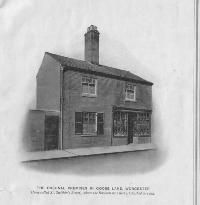
Kays can trace its heritage back to a jeweller and watchmaker based in Goose Lane, Worcester. The street was renamed as St Swithin’s Street at some point during the 19th century but the shop itself still exists and is currently operated by two small businesses (June 2020).
The shop was the original home to John Skarratt, an apprenticed clock and watchmaker from London, who founded his business in or about 1794 in these premises. His business grew and prospered in the city.
By 1814, Skarratt had moved his business to number 2, Broad Street. The shop was expanded sometime in the mid-1860s and was renumbered to number 3 Broad Street. Skarratt’s shop still exists as the “Shoe Zone” in the modern Broad Street.
The first formal record of William Kilbourne Kay living in Worcester is given in the census of 1881. He is recorded as living in “gentlemen’s accommodation” at number 10 Park Street in the Blockhouse area of the City of Worcester, with Mrs Martha Taylor as his landlady. He shared these accommodations with four other gentlemen.
William Kay was born on September 11th 1856, in Portsea Island within the city of Portsmouth and so he was 24 years old when he was recorded in the 1881 census. His early years were spent as a lodger with a number of families under the protection of the local parish, as he was an orphan. His mother had died shortly after he was born and his father had subsequently remarried. Sadly, in 1860, both his father and step-mother died leaving William and his younger half-brother, Edwin, as orphans.
As a young man, William Kay moved to Worcester in the early 1870s and took employment with the grandson of the original John Skarratt – John Martin Skarratt, who had taken over the running of his grandfather’s (who died in 1829) and his father’s (who died in 1859) business.
William Kilbourne Kay was married in February 1883 to his sweetheart, Jessie Farenden, a primary school governess, at St Luke’s Church in Southampton, and their first child was born the following December. The address for the birth given on the birth certificate reveals that Mr & Mrs Kay were living above the shop of JM Skarratt at number 3 Broad Street.
In 1886, shortly after the birth of his second son, Kay left the employ of Skarratt and went into partnership with a local architect named George Jones. The two gentlemen started up their own jewellery and watch business, known as Kay, Jones & Co of Worcester, from premises in The Foregate. The Kay and Jones families shared a home at Fort Royal and it is there that Kay’s third son is born in 1888.
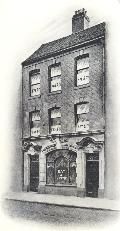
By 1890, Kay and Jones had dissolved their partnership, but Kay remained in the Foregate premises and changed the name of the company to Kay’s of Worcester. He employed four staff, comprising two clerks, an errand boy and himself. It was strictly a “cash with order” business, based on orders received direct from the customers who subscribed to Kay’s catalogue. The early catalogues were not dissimilar to those concertina files used today and in which household bills are kept. Kay filled the catalogue with handbills of his product range. There were no fashion or clothing items for sale. Kay’s early “book” catalogues are filled with jewellery, watches, clocks and household items.
In the census of 1891, Kay is now recorded as living at Wilberforce House, Ombersley Road, Worcester with his wife, three children and two servants. His occupation is given as a “wholesale jeweller”. His business was prospering and he had the money to buy a good size family home.
The company had its own premises at number 4 The Foregate between 1886 and 1894 and they still exist to this day.
As with all commercial enterprises, the need to expand to fulfil demand forced another change of premises on Kay in 1894. After some negotiations, Kay moved his business to a site in Shrub Hill Road. These impressive buildings had originally been built for a railway engineering company in the 1850s and had been used for Worcester’s Commercial Exhibition of 1882 and afterwards had been used by a number of small enterprises.
The buildings were modernised and new manufacturing plant installed. As with the Foregate, Shrub Hill had many advantages in that the “offices and manufactories” were very close to Worcester’s main-line railway station. Mail order was driven by the simple need to get goods delivered directly to the customer as quickly as possible and the closeness of the railway helped Kay to make a real success of his business.
Business must have been prospering, for in June 1895 Kay’s “Universal Stores” of Worcester was registered at Company’s House as Kay & Co Ltd., the name it still uses to this day.
In one of those twists of fate, Kay entered into discussions during 1896 to buy out John Martin Skarratt, the grandson of the original John Skarratt, and the man who gave him his first job in Worcester. The two businesses were amalgamated in the May of that year after the contracts were signed and monies paid. Kay could then legitimately claim that his business had been in existence for over one hundred years. An important marketing ploy in the troubled times of the late nineteenth and early twentieth centuries. There was also another very important aspect of this amalgamation. Skarratt & Co held a contract with the Great Western Railways (GWR) to supply “clocks, watches and timepieces” to the railway and this contract passed to Kay & Co Ltd. JM Skarratt retired to Cheltenham where he died in 1908.
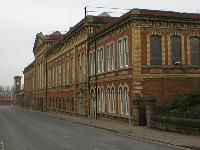
Kays entered the twentieth century as a successful commercial concern. The manufacture of many of the items featured in the catalogue was undertaken in the factory in Shrub Hill Road. Many others were being subcontracted to other “manufactories” in England and Europe. In particular, the watches and clocks were assembled, by hand, in Worcester. There was a great play made to the “Made in England” mark on many of the items sold. It was at this time (1902) that the board of directors accepted that the company should diversify and start to sell “Manchester Goods and Ladies Tailoring”. It was stated in the minutes of the board that unless the company did diversify it would go into decline as the competition in the watch and jewellery business was growing.
By 1906, it was again apparent that the business had to change premises once more. The reduction in the need to manufacture goods in Worcester and the expansion of the sales accounting effort meant that a purpose built office and warehouse would be needed.
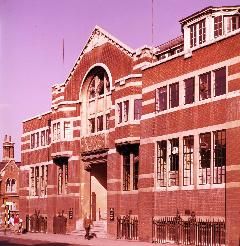
During 1906-07 the company negotiated the purchase of the land adjacent to St Oswald’s Hospital in the Tything, Worcester for £4000 with the Diocese of Worcester. The site was then redeveloped into the offices that were to be the company’s home for the next 94 years. Number 23, The Tything was the centre of all of Kays’ activities and was designed to Kilbourne Kay’s own specifications. The total cost of the new offices was approximately £16,800, which included an advanced central heating and cooling system, its own internal telephone system, electric lifts and staff toilet facilities.
The advent of the First World War caused a great deal of concern to the business as most of the men were called to serve King and country, including Kay’s sons, Tom and Edwin who were both directors of the company and his third son, Jack, who was a commissioned Army officer. There was great debate by the board as to how the business could possibly survive the dire situation that prevailed over the war years, particularly as suppliers of their catalogue goods may not be able to deliver them. Many items were obtained from European countries so it was critical that other supplies could be found. Kay recognised the worth of having a stable workforce and it was at this point in history that a larger number of ladies started to be employed in the company in a wider variety of roles and duties.
The company faced new business pressures when the war ended and it is to Kilbourne Kay’s efforts that much of the success of the business in the post war years can be attributed. He always wrote to the “travellers” giving them personal encouragement to do better for themselves and the business. These were the men who travelled (hence their name) around their territory visiting each of their customers, recruiting new customers and maintaining accurate accounts of their business.
Kay and his sons, Tom and Edwin, travelled across the U.K. and Europe re-establishing business links with suppliers and buying stock for the catalogue. This “grand tour” also ensured the continuation of the business by establishing new business contacts for items that could be sold through the catalogues.
Kays expanded as a business after WW1 and a review of the catalogues from this period shows the wide range of merchandise that was carried by the company.
By the mid 1920s, William Kilbourne Kay took a reluctant step backwards from the running of the company due to his continuing ill health. This resulted in Jack Kilbourne Kay, the youngest son, resigning his commission in the Army to take up a directorship in the company in 1926.
By the end of the decade, William Kilbourne Kay was suffering more and more with ill health and, in May 1929, he died at his home, The Elms, Battenhall, Worcester. The family suffered further tragedy four years later when Tom Kilbourne Kay, the eldest son and Managing Director, died in April 1933 as a result of contracting pneumonia after “sleeping in a damp bed” while on business in London. Edwin became Chairman and M.D. and Jack, the joint Managing Director. Both brothers were in their mid to late forties by 1936 and had decided that they could not continue running the company. They decided to sell the business and started to look for a suitable buyers.
The history of the company now takes another turn. In 1937, the newly appointed Managing Director of Great Universal Stores Ltd of Manchester, Isaac Wolfson and his brother, Charles, made a visit to the offices of Kays in Worcester. Negotiations took place that resulted in the majority of the company’s shareholdings, held by the Kay family, being sold to G.U.S. and Kay & Co Ltd benefiting from being given “administrative and managerial support” from G.U.S. for the next twenty-five years.
One of the immediate results of the involvement of Isaac Wolfson in the running of the company was that a new building was constructed on some land owned by the company along the road from number 23, The Tything.
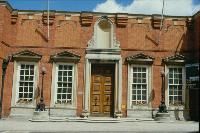
These became the stockrooms and additional offices for the company and were opened in January 1939. Unfortunately these offices caught fire in May 1941 and were totally destroyed as a result of the inferno. The impressive facade was left intact and can still be seen at 9-10 The Tything. New single-storey office accommodation was built behind this impressive frontage after the war finished.
World War Two saw similar challenges to that experienced in 1914-1918. The catalogues were reduced in size to below 100 pages, due to paper rationing, but were still issued twice each year and they contained colour illustrations. Rationing coupons were needed, as well as money, to buy most things. Easy payment terms were heavily promoted, having been introduced back in 1910. Kays’ offices were used as a stockroom for food and other supplies needed for the war effort.
When WW2 finished, the land behind the Tything offices was purchased by the County Council and the green lawns were dug up and replaced with a cinder car park area. Many residents of Worcester may remember the Ministry of Transport vehicle licensing and tax office being on this car park at the back of the Tything where it remained up until the late 1970s. In the 1960s, Worcestershire County Council had plans to redevelop the whole site, including Kays’ buildings into a new headquarters complex for their staff. Fortunately these plans never came to be. The thought of three thirteen storey office blocks in this area of Worcester does not bear thinking about and would have been a planning disaster.
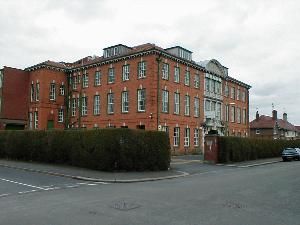
In 1951 Kays expanded once more and bought an impressive red brick factory in Northwick Avenue, Barbourne in order to cope with the post-war growth in mail-order business. This was used as a warehouse throughout the next two decades. Closed in 1971 and then re-opened as an office three years later, after refurbishment, the Barbourne site remained a major part of the Worcester operations until it closed in 2002. It is now a residential building.
The post war sales boom also changed the direction of the company’s business as it was recognised that those customers in the north of England and Scotland needed an office of their own. The company bought an old flax mill, known as the Temple Works in Marshall Street, Leeds. This impressive building was designed by the original owner to look like an Egyptian temple, hence the name. Northern and Scottish agents and their customers were transferred to Leeds in the spring of 1953. As far as the Scottish agents were concerned this was a short-term move as later in 1953 an office was also opened in Glasgow, when the company moved to rented office accommodation in Albion Street.
In 1956, further expansion of the northern part of Kays’ business saw the building of the Marshall Street offices, which were in use until the autumn of 2004.
In Worcester, a new single storey warehouse was built at 202 Bransford Road and this land purchase also gave Kays ownership of the historic Cinderella Sports Ground, the original home of Worcestershire County Cricket Club. The pavilion here still has a Kays’ clock in its gable end and this was donated to the WCCC by a member in 1896. (Sadly due to much political toing and froing in 2006 Shop Direct started to demolish the pavillion and although a conservation order has been placed on the building it has been open to the elements for the winter and must be in a dreadful state)
In 1958, Kays bought an existing factory on the Berry Hill Estate in Droitwich and used this as a despatching warehouse for the larger items in the catalogue such as lawn mowers, cycles and other bulky items.
Growth in the business saw rapid expansion during the 1960s. Offices were opened in Newtown (Powys as is, Montgomery as was), York, Lancaster and Bristol. Further expansion of the Leeds warehousing site was also completed.
It became obvious to the company that the warehouse facilities in Worcester need to be developed to cope with the expected increase in business. Part of the site of an engineering works, Alley and MacLellan, at 205 Bromyard Road was purchased with plans to create a new warehouse facility on the site. This was added to later when the whole site was bought and a new warehouse was designed and built on the land in the late 1960s. In the mid-1980s, a large automated storage warehouse was also built. The two warehouses used the most advanced warehouse systems available and remained one of the major despatch and stock warehouses in the company although the operations on the site closed in February 2007.
Perhaps the greatest change came in the late 1960s when the development and implementation of the computer systems that were to take the company forward in all of its operations, was approved by the board. Initially the computer team was based in the St Oswald’s’ building (no. 23, The Tything) and another was set up in Leeds a little later. These teams created the applications that allowed a further era of rapid business expansion.
In the late 1960s, another office building was purchased, this time from British Railways, adjacent to the railway station at Shrub Hill in Worcester. In yet another twist of fate, the company had returned, after a period of over sixty years, to its roots. The merchandise buying teams together with the publications department were relocated to the appropriately named, Elgar House. This move allowed the computer teams to expand into offices at St Oswald’s where the main computer installation was located.
The 1970s saw a period of growth and stabilisation of the operations, although the postal strike of 1971 acted as a catalyst for the creation of the GUS group’s own transport fleet, known as White Arrow Express and what later became Reality. Closer operational ties were forged with the sister mail-order operations of the British Mail Order Company (BMOC) and these links became more and more evident throughout the 1980s when GUS Home Shopping Ltd was formed. This company became the controlling organisation for the catalogue sales operations within the GUS group.
Kays business continued expanding in this period and investment in the new building was made for the Leeds operation. A four-storey warehouse was constructed at Sweet Street, Leeds and this opened in 1981.
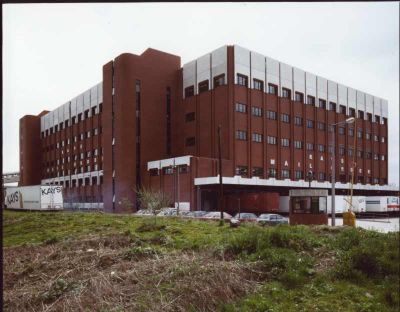
This warehouse served the agents and customers in the northern half of the U.K. and continued to do so until it closed in August 2004.
In 1994 Kays celebrated its 200th anniversary. A number of special events were held in Worcester including a celebration lunch for invited guests, in the July of that year. A plaque was unveiled by the wife of the chairman of GUS on the shop at St Swithin’s Street where John Skarratt started the business in 1794 and eventually amalgamated with Kays in 1896.
And it is there that the story of Kays now reaches its end.
By the year 2000, Kays was still a trading, published catalogue business but was now part of a GUS company known as Argos Retail Group and the company’s services, such as warehousing, IT, Call centres etc, were part of another GUS company, the Reality Group.
In 2003, GUS sold the entire mail-order operation to March UK Ltd, a company formed by the Barclay Brother’s business empire. These entrepreneurial businessmen had purchased the Littlewoods mail-order catalogue business in 1997 and the process of amalgamating these two famous names in the mail-order industry started.
It was announced in May 2006 that the warehouse operations at Worcester would close at the end of 2006, effectively bringing to an end any links with the Kays name in Worcester after two centuries. On February 23rd 2007, the warehouse operations at Worcester ceased and the staff left the site for the last time.
Shop Direct are concentrating their business operations in the north-west of England centred around Liverpool, the original home of the Littlewoods catalogue business.
As an aside, the company that was for many years one of the most successful retailers in the U.K., namely Great Universal Stores plc, ceased to be quoted on the Stock Exchange in September 2006 after the various divisions such as Burberry, Experian and Home Retail (Argos and Homebase) were de-merged from the plc.
In May 2007, Littlewoods Shop Direct Home Shopping Ltd and their subsiduary Home Delivery Direct, announced that they would be relocating the National Sort and Distribution centre, currently at Droitwich, to a site in the Coventry area. This move would be phased in over the next eighteen months or so. When the Droitwich distribution centre closes the very last link to Kays and its operations in Worcestershire will have gone, ending over 210 years of commercial activity, by the company, in the county.
